
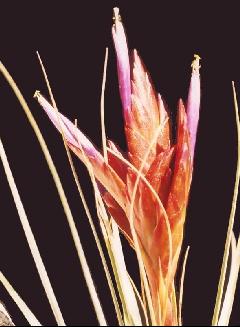
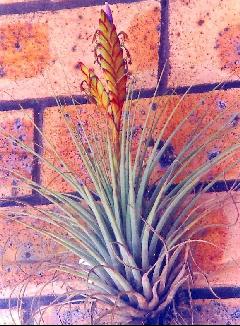



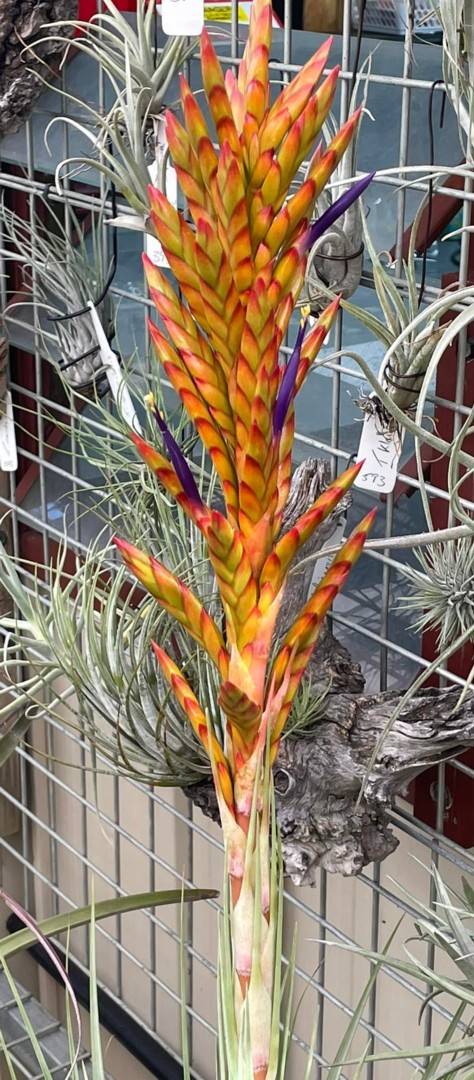



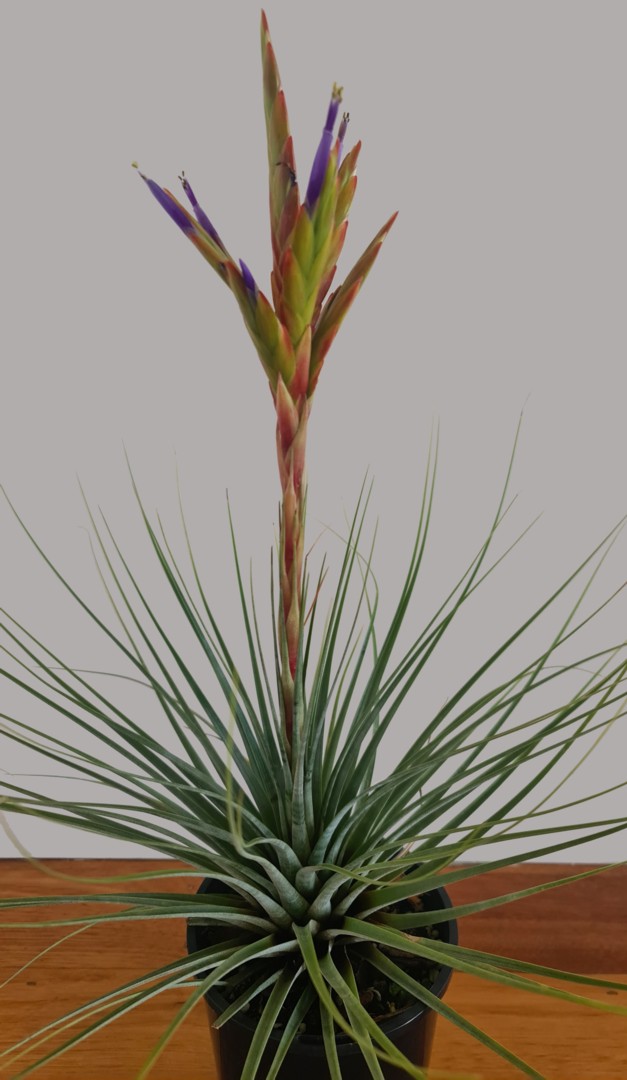
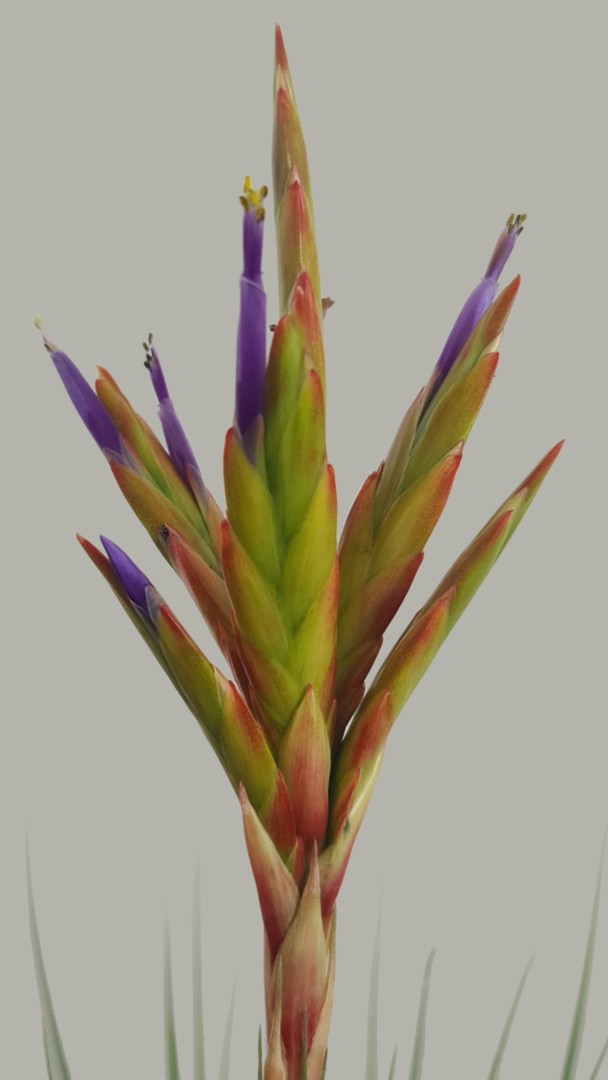
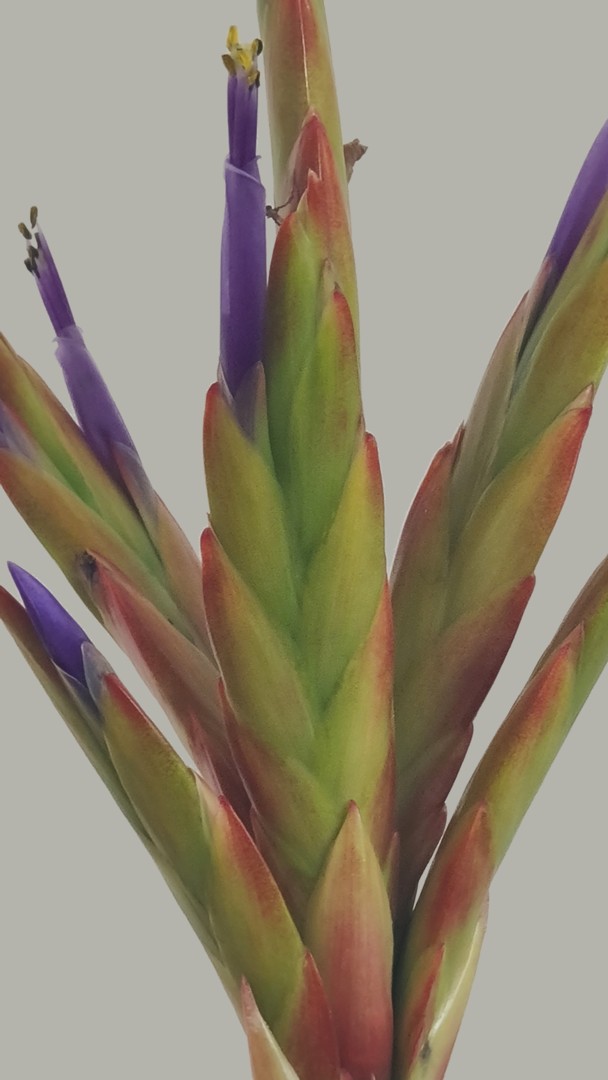
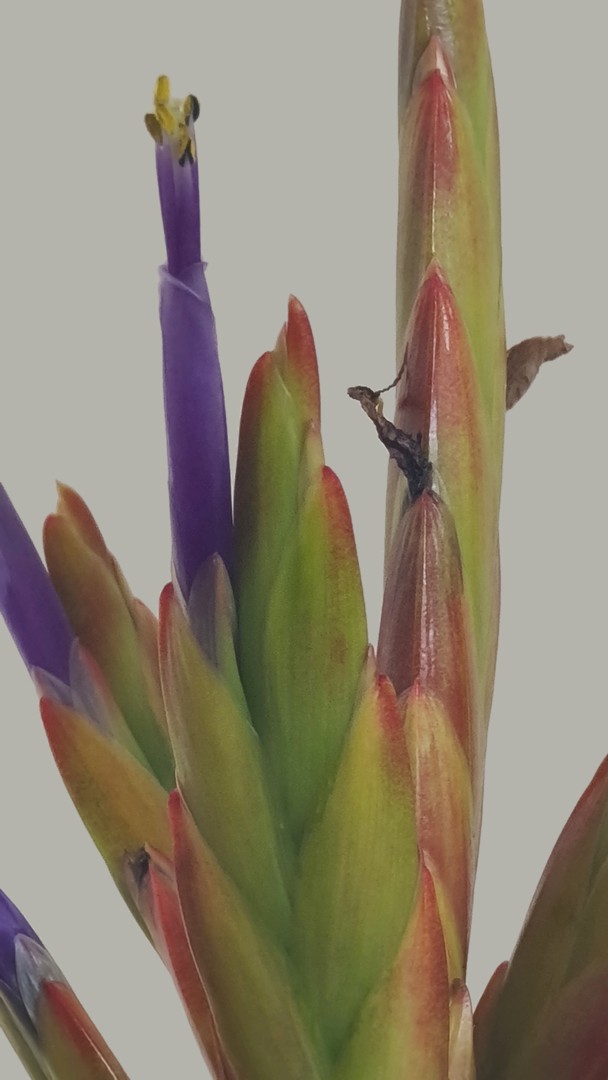
Notes from Gardner in Selbyana Vol 7 p372 1984
Tillandsia X polita L. B. Smith pro sp. et stat. nov.
Type: GUATEMALA: EL QUICHE: Quiche Standley 62465 (Holotype: F).
Probable parentage: T. rotundata (L. B. Smith) C. S. Gardner X T. rodrigueziana Mez
Additional material examined: MEXICO: CHIAPAS: Tuxtla to Las Casas , 1957, Foster & Van Hyning 2951 (US); Teopisca, 1979, Gardner 1085 (SEL); 1981, Gardner1420 (SEL). GUATEMALA: BAJA VERAPAZ: Saloma, 1960, King 3285 (TEX, US). HONDURAS: Morazan, 1964, Gilmartin 981 b, (US).
Distribution: Chiapas, Mexico, Guatemala, and Honduras.
Near San Cristobal de Las Casas, in the highlands of Chiapas, T. rotundata apparently hybridizes with T. rodrigueziana. Specimens, intermediate between these species occur, and morphological diversity among the putative hybrids suggests backcrosses and/or sibling crosses. Some of these intermediates were found to agree well with Standley 62465. The distributions of both putative parent species extend into Guatemala and other specimens examined suggest they hybridize there also.
Pollen infertility (0 to 18%) and the results of statistical analysis of morphological characteristics among the assumed hybrids and their putative parents support the notion of a hybrid origin for this species (Gardner, 1983).
Tillandsia polita L. B. SMITH var. elongata EHLERS, Die Brom 2/2003: 45-48. 2003
A varietate typica inflorescentia cylindriciter elongato magis spicis compositis recedit.
Typus: Mexico, Chiapas, nahe Teopisca, StraBen-km 130, 1900 m s. m., EM 980903, leg. Renate Ehlers 12. 3. 98, Holotypus (MEXU), ibidem, leg. Renate Ehlers EM 011302, 27. 1. 01, Paratypus (WU).
Sue Gardner writes in her dissertation that she of the opinion that T. polita is a hybrid and suspects its parents as T. rotundata L. B. Smith and T. rodrigueziana Mez
She determined a high pollen-infertility. ( 0-18% fertility ).
Already in the 1980’s Klaus and I did not share this opinion. The plant is very dispersed over many km. It grows in association with T. carlsoniae, T. vicentina var. wuelfinghoffii Rauh, T. aff. dasyliriifolia, isolated from T. rodigueziana MEZ, however much we looked for it.
T. rotundata could never be found in this area. Our observations were that it is not at home in some damp forest-area loves somewhat drier and lighter locations. We observed it largely occurring between Comitan and Las Margaritas as well as between Comitan and the Lagunas Montebello and in the area about Bochil. At all these places it grew with T. belloensis WEBER , T. rodrigueziana MEZ and T. dasyliriifolia. Hybrids between T. rodrigueziana and T. rotundata (L. B. SMITH) GARDNER could occur in this small area.
A pollen-examination of T. polita by Dr. Walter Till in Vienna yielded a fertility rate from approximately 90 % and Dr. Till, after the examination, was of the opinion that it came from a species not a hybrid.
We got already in 1986 from Mr. Rudolf Wulfinghoff, Pforzheim, a photo of a plant, which he found in the area between Comitan and St. Cristobal. It showed a plant, that was similar to T. polita, but had an inflorescence more narrow and much longer. Normally T. polita has an almost spherical or egg shaped inflorescence. On our next trip to this area we were on the look out for this plant of Mr. Wulfinghoff’s, but unfortunately we had no luck.
In the year 1998, on my trip with Jurgen Lautner, I came into the area again. And this time we arrived at a place where I found many copies of T. polita with long, cylindrical inflorescences. Unfortunately no fresh flowers existed because all the plants had already flowered.
December 2001 was the last trip to the area. Again, I had opportunity to explore this location for anything choice. All I saw brought a tear to my eye. This splendid forest had turned into what! Previously Klaus and I had called it "Our Wonderland". A gigantic area of primary forest, with many bromeliads, orchids and epiphytic cactus, where it seemed nature was in unison with itself in the unison. Already in 1989 we could see what was happening to our "Wonderland" but never thought it would go this far.
But back to our trip in December 2001. I had luck this time because there were many plants in flower and I had time to study the better quality plants and to photograph. I determined, that the Tillandsia with the long narrow inflorescence spreads over a rather large area and also in large quantities none of which resembled or nearly resembled the type species. The inflorescence is much longer and narrower, not almost spherical like T. polita, and it is composed of many more spikes. Therefore, it is justified to look at this plant as as a variety.
Literature:
Smith, L. B. & Downs, R. J., Tillandsioideae (Bromeliaceae) in FLORA NEOTROPICA, Monograph 14, part 2 Hafner Press, New York, 1989.
Gardner, C. S. : A Systematic Study of Tillandsia subgenus Tillandsia, University
Danksagung:
Herrn Dr. Walter Till, Botanisches Institut der Universitat Wien, meinen herzlichsten Dank fur seine Beratung und die Erstellung der lateinischen Differential diagnose.
Abstract:
T. polita var. elongata is a new variety of T. polita, which differs from the normal form by an elongated and very narrow inflorescence which is not globose. It is widespread in Mexico, Chiapas, near Teopisca. In contrast to a statement of Sue Gardner T. polita seems to be a valid species, not a hybrid between T. rotundata and rodrigueziana, which is also based on fertility studies by W. Till. (This is also confirmed by it being grown from self set seed in Australia – Butcher)